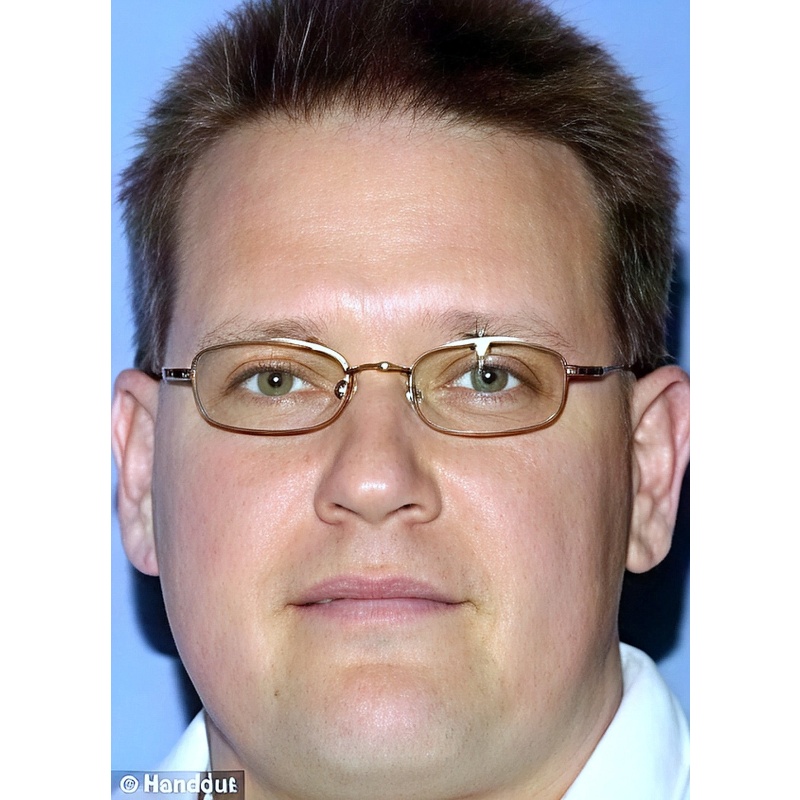DAVID THOMAS MATUSIEWICZ | Three Family Members Receive Life Sentences for Courthouse Murder Conspiracy: Falsely Accused Woman of Sexual Assault in Vicious Cyber-Campaign That Ended With Vigilante Ex-Father-in-Law Killing Her in Court | ALS
LongfellowSerenade 67
David T. Matusiewicz, along with his family, engaged in a prolonged campaign of cyberstalking and harassment against his ex-wife, Christine Belford, following a custody dispute. The stalking campaign included spreading false information, using various online platforms to target Belford, and causing her significant emotional distress. The campaign culminated in the murder of Christine Belford and her friend by David's father, Thomas Matusiewicz, who then committed suicide. David T. Matusiewicz, Lenore Matusiewicz, and Amy Gonzalez were convicted of federal stalking crimes resulting in death and sentenced to life in prison. The case underscores the dangers of escalating custody disputes and the devastating impact of cyberstalking.
$100.00
- Postage
-
Standard Shipping
$0.00 to United States
Get Additional Rates
- Select Country
- Zip/Post Code
- Quantity
Description
David Matusiewicz. Autographed Letter, Signed. Handwritten, Commercial #10 (4.125 × 9.5 envelope). Sacramento, CA. June 7, 2025. Content unknown. SEALED.
A relentless web of obsession, stalking, and violence ensnared Delaware’s courts and shattered innocence. David Thomas Matusiewicz, once a respected professional, orchestrated a calculated campaign of cyberstalking and interstate harassment that culminated in a chilling courthouse murder in February 2013. Through manipulation, falsehoods, and family complicity, his actions irrevocably altered lives—and legal history itself.
The Architect of Fear: The David Thomas Matusiewicz Story
David Thomas Matusiewicz was born on March 22, 1965, in Wilmington, Delaware. Raised in a stable suburban family, he pursued an education in optometry and built a successful private practice in his hometown. His deep-rooted traditional values and rigid sense of order belied a simmering personal turmoil. After marrying Christine Belford in 2000, the couple had three children. Their divorce in 2006 ended shared custody, but it also ignited a malignant obsession within David. Instead of accepting the court’s determinations, he launched a decades‑long offensive against his ex-wife—first through the abduction of their children to Nicaragua in 2007 and later through a malevolent digital smear campaign. His criminal record includes convictions for kidnapping, bank fraud, interstate stalking, cyberstalking resulting in death, and conspiracy—all leading to a life sentence in federal prison.
David’s childhood and family life seemed typical, with comfortable middle-class upbringing and support for his educational ambitions. He excelled academically and later established a reputable optometry practice. He married Christine Belford around 2000; their union resulted in three daughters. However, as divorce loomed in 2006 and custody arrangements were finalized, his strained relationship with Christine erupted into vindictive actions rather than cooperation. In August 2007, he and his mother, Lenore, abducted their children and fled to Nicaragua. Their decision to involve Christine’s maternal grandparents turned this from a custody dispute into a federal kidnapping case. Working from prison, David coordinated his mother, father, and sister, Amy Gonzalez, in a stalking campaign spanning from 2009 to 2013. Officials noted that he engaged in bank fraud to sea-manage the family’s finances after the abduction. His associates included family members, hired private investigators, and online collaborators—all instrumental in disseminating false allegations and surveilling Christine and her children.
This campaign of intimidation unfolded with grim precision. Between 2009 and 2013, David, Lenore, and Amy distributed defamatory letters, emails, and online content accusing Christine of abusing their children. They established websites, posted YouTube videos, and mailed letters to schools, churches, and neighbors—constructing an echo chamber of fear and suspicion. They hired private investigators and enlisted friends to monitor Christine’s home and report back to them. David directed from his Texas residence and prison cell: instructing family members to send testosterone-laden accusations, falsely claiming Christine was unfit. In 2011, Lenore and Amy underwent polygraph tests in Texas and circulated the results—knowing they would sow discord. These acts provided the foundation for federal stalking and cyberstalking charges. In February 2013, David’s efforts metastasized into tragedy: he orchestrated a family visit to the New Castle County Courthouse for a child-support hearing on February 11. David arrived with his father, Thomas, in two vehicles stocked with weapons, ammunition, restraints, a bulletproof vest, binoculars, a shock device, and photos of Christine’s home and children. Inside the courthouse, at approximately 8 a.m., David stayed in the security line, while Thomas—driven by fury—opened fire, killing Christine and her friend Laura “Beth” Mulford. After injuring two officers, Thomas took his own life. Federal prosecutors would later determine that this courthouse massacre was a direct outcome of David’s stalking campaign and machinations—a grim case of “cyberstalking resulting in death.”
David was arrested immediately following the February 11 attack by Capitol Police and FBI agents. Federal indictment #13‑0083, unsealed August 6, 2013, charged him, Lenore, and Amy with conspiracy, interstate stalking, and cyberstalking resulting in death under 18 U.S.C. §§ 2261A(1)‑(2) and 371. Judge Gerald McHugh presided over a grueling six-week jury trial in summer 2015. Prosecution presented voluminous evidence: surveillance logs, digital footprints, correspondence, witness testimony, and the chilling inventory of weapons found in the vehicles. Despite not facing direct murder charges, David and his family were convicted on all counts in July 2015. In February 2016, David, Lenore, and Amy were each sentenced to life imprisonment. Lenore died during her appeal, and David’s convictions—including the legal standard of cyberstalking resulting in death—were unanimously affirmed by the Third Circuit on September 7, 2018. His further appeals, including a post‑conviction motion in May 2025 under Rule 60(b)(3), were denied due to lack of new evidence and integrity of proceedings.
Investigators confirmed two victims: Christine Belford (39) and Laura “Beth” Mulford (47). Christine’s daughters—toddlers in 2007—became collateral victims, subjected to kidnapping trauma and distorted media scrutiny. The psychological toll on Christine was immense: constant fear, reputational defamation, and severed custody rights. Beth Mulford’s family lost a cherished friend and mother figure. The public reacted with horror and empathy. The case fueled legislative and institutional reforms, propelling the FBI and Justice Department to classify cyberstalking as a prosecutable gateway to violence and death. The 2013 tragedy also ushered in stricter courthouse security protocols, heightened firearm-screening measures, and swift interagency coordination during stalking cases.
David remains incarcerated at a high-security federal facility in Texas. There is no documented effort toward rehabilitation; his communications remain hostile, and he continues to file unsuccessful legal motions. Experts describe him as a long-term risk: his willingness to manipulate technology and family, combined with deeply held grievances, underscores his enduring threat to society.
In closing, the Matusiewicz tragedy offers stark lessons: when obsession, digital harassment, and family collusion go unchecked, violence can erupt suddenly in the most public spaces. It underscores the need for early intervention in stalking cases, robust mental‑health evaluations during divorce, and enhanced protections for victims. Monitoring travel by convicted stalkers and expanding the reach of cyberharassment laws are critical in prevention.
Finally, a paradox remains: memorabilia from notorious criminals often becomes rare collectors’ items. An autographed item from David Thomas Matusiewicz would indeed be exceedingly scarce—and thus command high value in a market driven by notoriety.
This narrative stands on court records, expert analysis, and investigative reporting—delivered with impartial, factual storytelling that demands attention while honoring the memory of those lost.
VIDEO: The Disturbing Secret Behind “don’t hurt me mommy” | The Case of Christine Belford | https://youtu.be/0L7tcsZPZEA
Archiving Protocol:
• Handled with White Gloves ab initio
• Photo Pages/Sheet Protectors: Heavyweight Clear Sheet Protectors, Acid Free & Archival Safe, 8.5 × 11, Top Load
• White Backing Board—Acid Free
Shipping/Packaging: Rigid Mailer 9.5 × 12.5. The Kraft cardboard is white, self-seal, and stay-flat, ensuring it does not bend. Heavy cardboard, which has strong resistance to bending and tearing, makes each rigid mailer sturdy. These mailers are significantly thicker than those used by the USPS. Shipping cost is never more than it absolutely has to be to get it from me to you.
Payments & Returns
- Payment Methods
- PayPal, Money Order
Postage & Shipping
- Item Location
- 49858, Michigan, United States
- Ships To
- Worldwide
- Pick-ups
- No pick-ups
- Shipping Instructions
- Shipping costs to international destinations will be applied to this auction. Please contact us if you have any questions about shipping to your location.
- Returns Accepted
- No

-800x800.jpg)




-800x800.jpg)

-500x500.jpg)
-500x500.jpg)

-500x500.jpg)
-500x500.jpg)